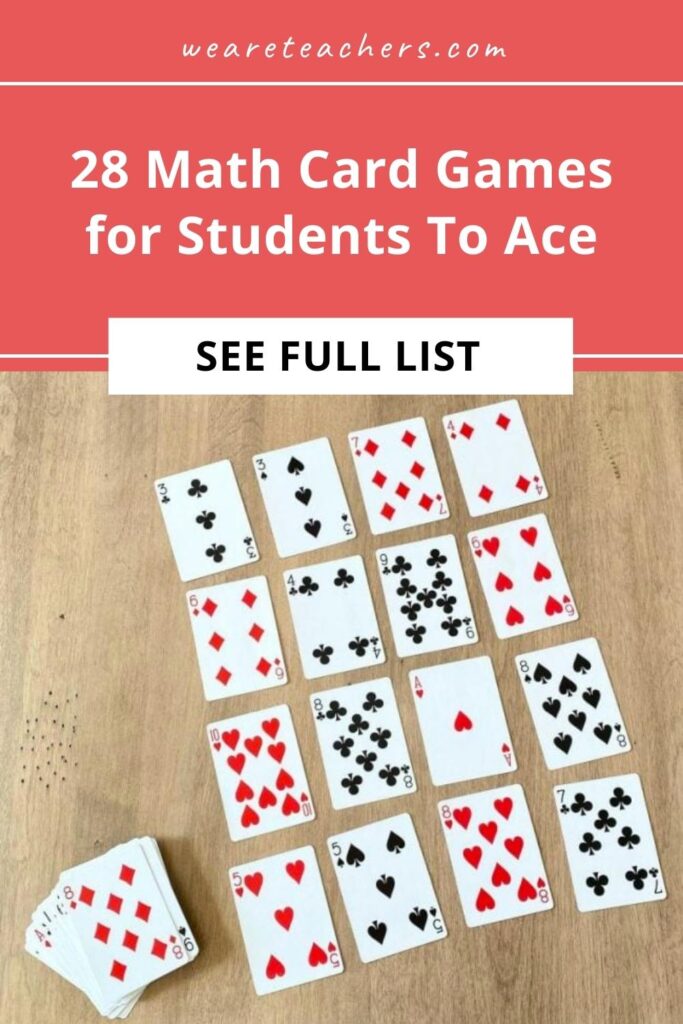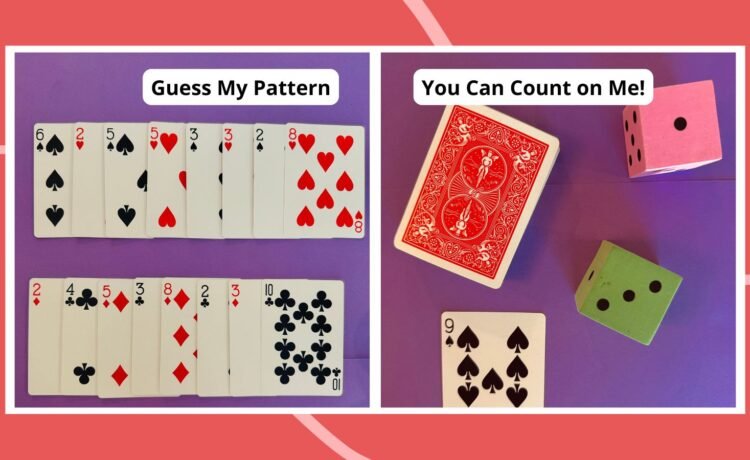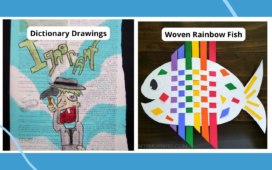A deck of playing cards contains a lot of math just waiting to be explored. Every card has a number value, most have numbers on them, and all have symbols (hearts, diamonds, spades, clubs) that can be counted and correspond to the number on the card. Kids like playing cards and know many games from home, and they all use math! The first card game most kids learn is War. In that simple game, you compare numbers and determine which is higher or lower. You can’t get more “mathy” than that. Or maybe you can? Check out these math card games for use in your classroom.
1. Make 10
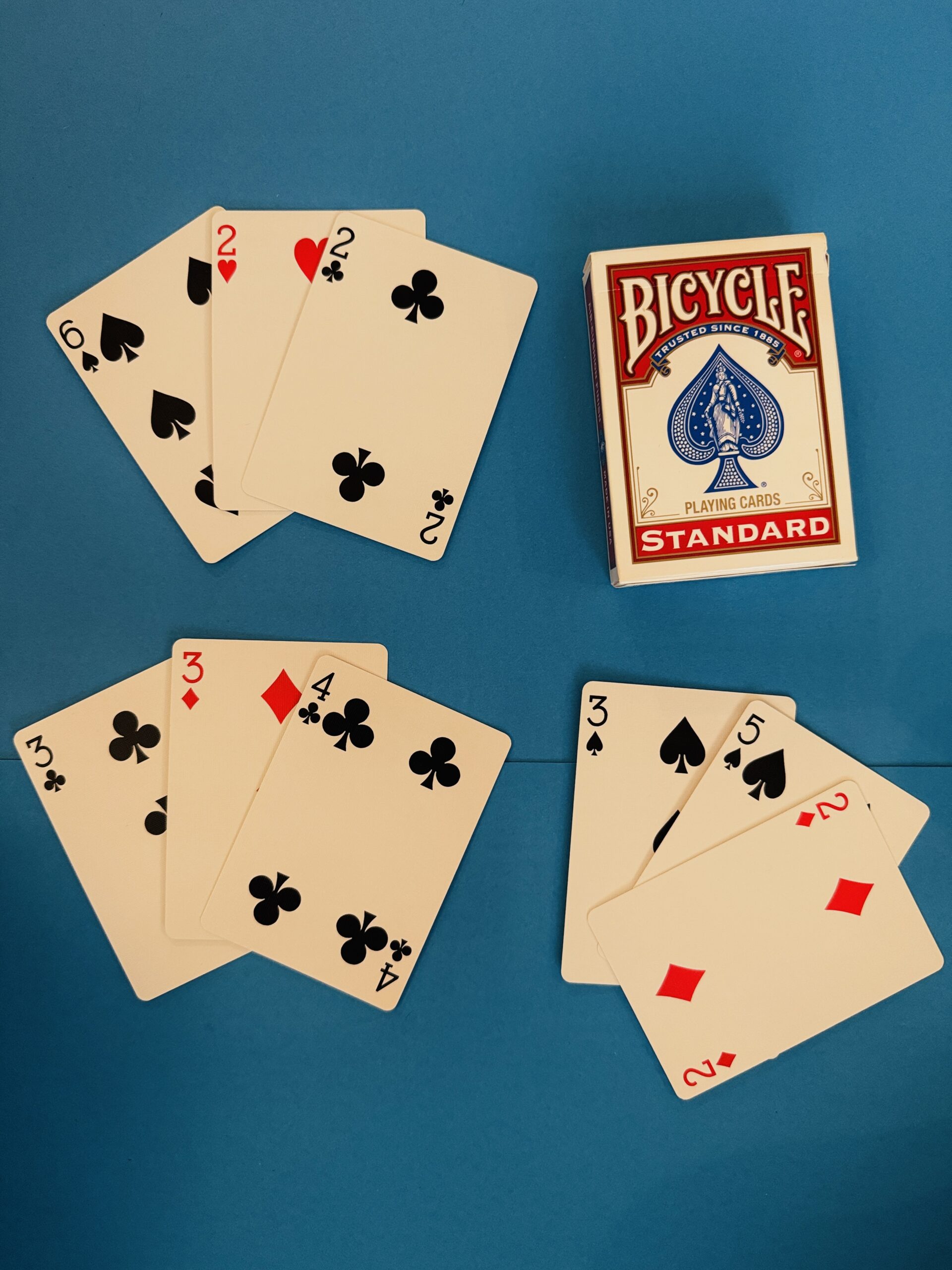
Making 10 is a very good strategy when adding lots of numbers together. Here’s one of the math card games that gives students some practice with ways to make 10. Remove face cards from the deck. Deal out three cards to each player. Players try to “make 10” exactly with the cards in their hand. They can use two or three cards to do it. Players can discard one card in each round and pick up a new one until they have a combination that makes 10. Once they do that, they win the round.
2. Skip-Count to 100
Here’s a good game to practice skip counting by 5’s and 10’s. Two players take turns pulling cards from the deck. Every time they pull a 5 or a 10, they keep it and begin a count to 100. Other cards are put in the discard pile. As they collect 5’s and 10’s, they count up. The first person to 100 wins. You can also practice skip counting by other numbers using the same game format.
3. More Than/Less Than
Comparing numbers is a good math skill to practice in early grades. Here’s a fun way to do it incorporating a math card game. Deal out cards so each player has half the deck. Players take turns being the leader and calling out either “More than” or “Less than.” They then take the card from the top of their pile and turn it over. Whatever the rule was for that round is applied to the two cards. Whoever has the card that meets that rule wins both cards. The player with the most cards at the end of the deck is the winner.
4. Same, Same
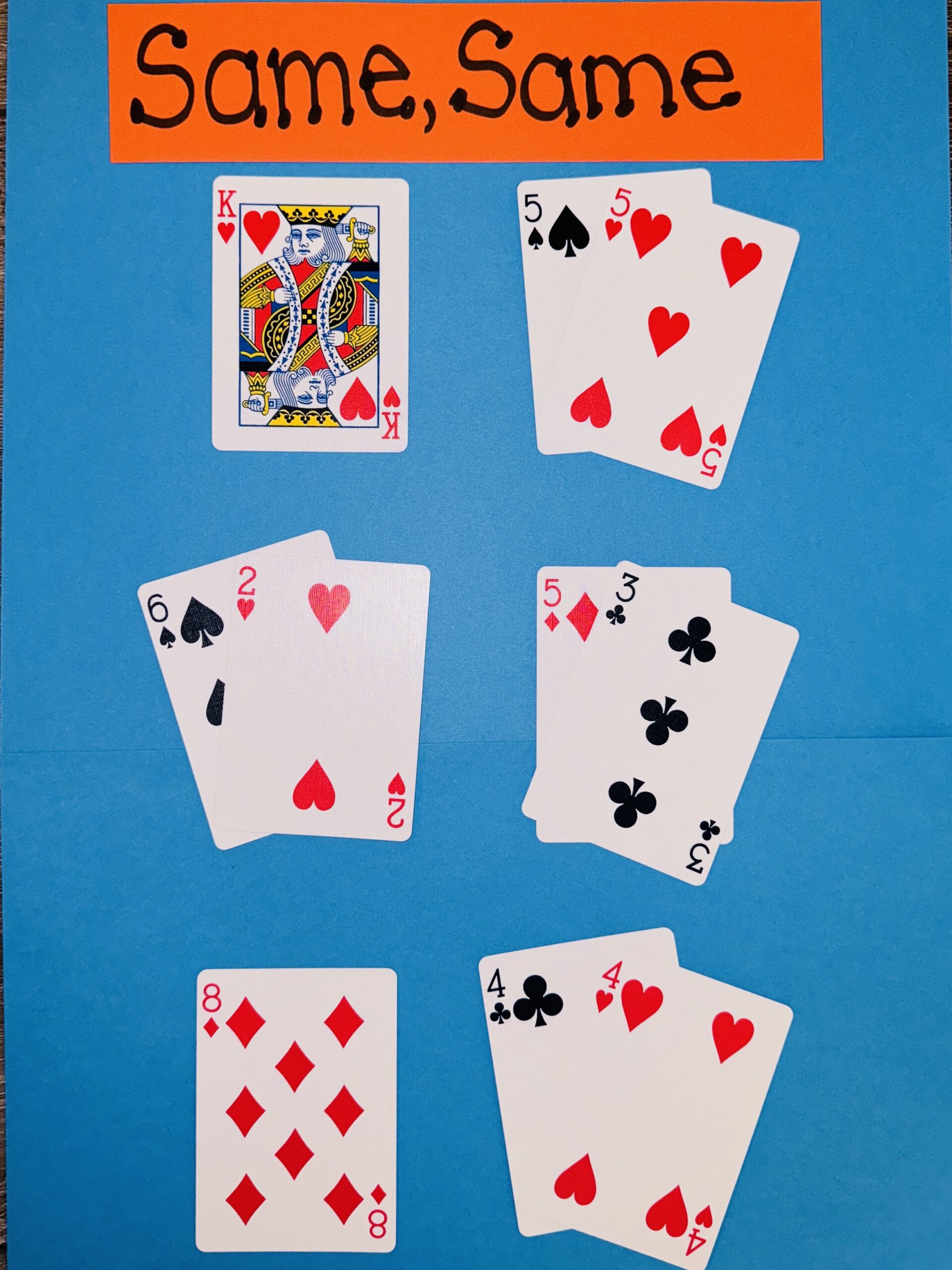
If you’re looking for math card games students can play individually, try this activity. Give each student a full deck of cards. Have them arrange the cards in sets to show two ways to make the same amount as many times as they can using as many of the cards as they can. For example, they could show 10 by putting out a king in one set and two 5’s in the matching set. You could make 7 with a 3 card and a 4 card in one set and a 5 card and a 2 card in another set. This is a creative thinking challenge with a lot of addition included.
5. “Sum” Are Odd and “Sum” Are Even
You can practice addition and odd and even numbers with this simple math card game. Shuffle the deck and place it between two partners. The lead player declares “Odd” or “Even.” Let’s say she says, “Even.” Players then each draw a card. The cards are added together. If the sum is even, the lead player keeps the cards. If the sum is odd, the other player takes the cards. Now the other player gets to declare odd or even. Play continues until the deck is finished, and then the cards are counted to see who has the most.
6. 3 in a Row
Here’s some practice counting forward and backward. A player takes a card from the top of the deck. This becomes their lead card. They continue to pull cards looking to create three in a row from their lead card. They can count forward, backward, or both. If I pull a 7 for my lead card, for example, and my next card is a 6, I can place it in front of the 7 in a row. I now have two in a row. I need either an 8 or a 5 to complete my three in a row. Players take turns pulling cards until someone gets three in a row. Discards are put in the bottom of the deck.
7. Fraction War
You can build and compare fractions with this math card game. Remove face cards from the deck. Each player needs a pencil. The object of the game is to create the largest fraction. Players put the pencil down on the desk and draw a card. They place it above the pencil if they want it to be the numerator and below the pencil for the denominator. Once placed, it can’t be moved. Players take turns pulling cards from the deck and placing them. When all four cards are placed, the resulting fractions are compared and the largest wins.
Before you begin, decide if fractions can be improper or not. If not, and an improper fraction is created, the player loses that round.
8. Number Card Bingo
Appoint one student as the caller and give them a full deck of cards. Other players get their decks and on their desks, lay out a 4 x 4 Bingo card with a total of 16 cards. The caller pulls a card and says what it is while showing it to the class. Players look at their Bingo card and if they have the same number (doesn’t have to be the same suit), they turn that card over. Once you have four cards in a row turned down in any direction, that’s a Bingo.
9. Guess My Pattern
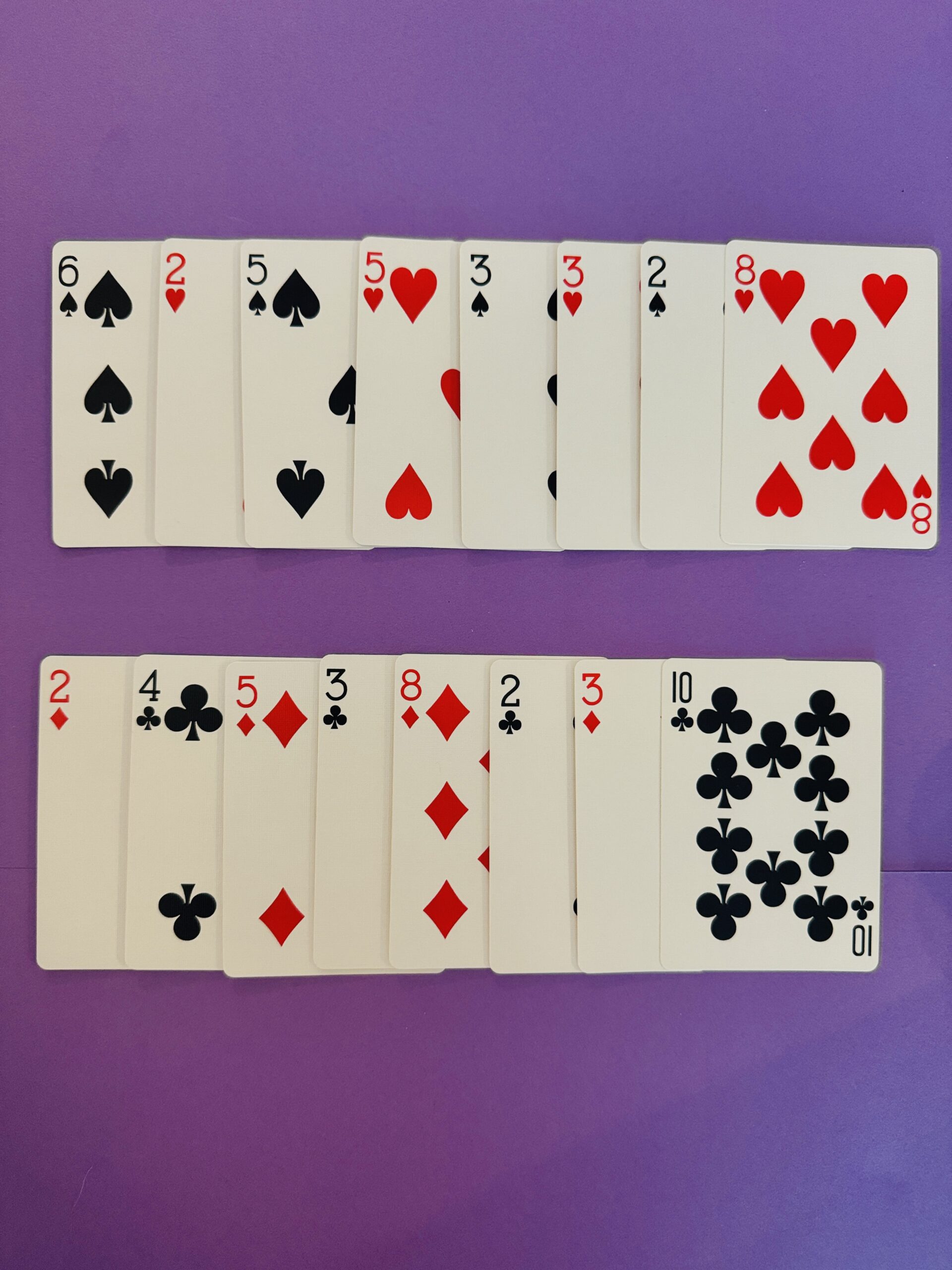
Patterns are the basis of a lot of mathematics. Recognizing patterns depends on understanding what is repeating in a pattern, also known as the rule. Each player takes a deck of cards and on their desks creates a pattern of at least eight cards. It could be a number pattern, a color pattern, a suit pattern, or any combination of those elements. Students then write their rule down on a piece of paper and turn it over. When ready, players walk around the room looking at each other’s patterns and trying to guess the rule.
10. Full-Team Concentration
Gather students around on the carpet. Split them into teams and have them sit in a group. Lay out all 52 cards in a deck face down in rows on the carpet. Tell students you are going to play FULL Concentration with every card in the deck. Explain how a team will indicate two cards to flip over. If the cards have the same value, the team keeps the cards. If they don’t, the cards get flipped back over in the same spaces. Play until every card is gone. Teams count their cards to see who won. Make sure teams let all players on the team take turns flipping cards over, although all can consult on each flip.
11. Clock Solitaire
Shuffle the cards and deal them out into 13 face-down piles for this math card game. Now take 12 of the piles and arrange them into a circle, like a clock. The 13th pile goes into the middle of the clock. There will be four cards in each pile. Turn up the top card of the middle pile. If it is a 3, it belongs in the 3 o’clock pile. Slip the card under that pile face up. Then flip over the top card from that pile and put it under the pile where it belongs. Keep doing this. When you get to the last face-down cards, the numbers on the clock will appear. But watch out for the kings: If all four of them reach the center before the other piles are complete, the game ends and it’s time to deal out another clock.
12. I Spy the Cards
Deal out 20 cards face up. Tell students, “I will tell you what I spy, and you see if you can find the cards.” An example would be “I spy two cards that add up to 15.” Players must try to spot two cards (like a 9 and a 6) that would do that. If they find them, they should raise their hand and then touch the two cards. Let students take turns being the spy. You can call out cards that add up to a sum or cards that could serve as factors to multiply a certain product.
13. Round Up
Players take turns picking two cards each from the deck. They lay their two cards down, side by side, with the first card in the tens place and the second card in the ones place. So if you picked a 3 and a 9, your number is 39. Now you round to the nearest 10, which gives you a score of 40. Your partner pulls a 7 and then a 2. Their number is 72. They round down to 70, but they still have a higher score than you so they win the round. Keep score until the deck is completed, and then compare. You can play this with or without face cards. If you play with face cards and a face card or a 10 card is placed in the ones place, you need to consider it as 10 ones.
14. Don’t Get Busted!
The object of this game is to get as close to 100 as possible and not go over. Players each pick four cards from the deck. They arrange the cards to create addends that when added together will give them the closest possible sum to 100. If I picked a 3, 7, 2, and 9, I would probably create 32 + 29 = 61. I’m tempted to put the 7 or 9 in the tens place, but that would end up sending me over 100 when I add them. Then I’m busted! The player with the closest score to 100 without going over wins. Lots of thinking and adding here.
15. Positive and Negative Cards
You can practice positive and negative numbers with this game by deeming all red cards as negative numbers and all black cards as positive numbers. Each player chooses two cards and adds them together, remembering that reds are negative and blacks are positive. You can play this with the goal being to create the lowest number possible or the highest number possible. Players compare sums, and whoever meets the game goal wins that round.
16. You Can Count on Me
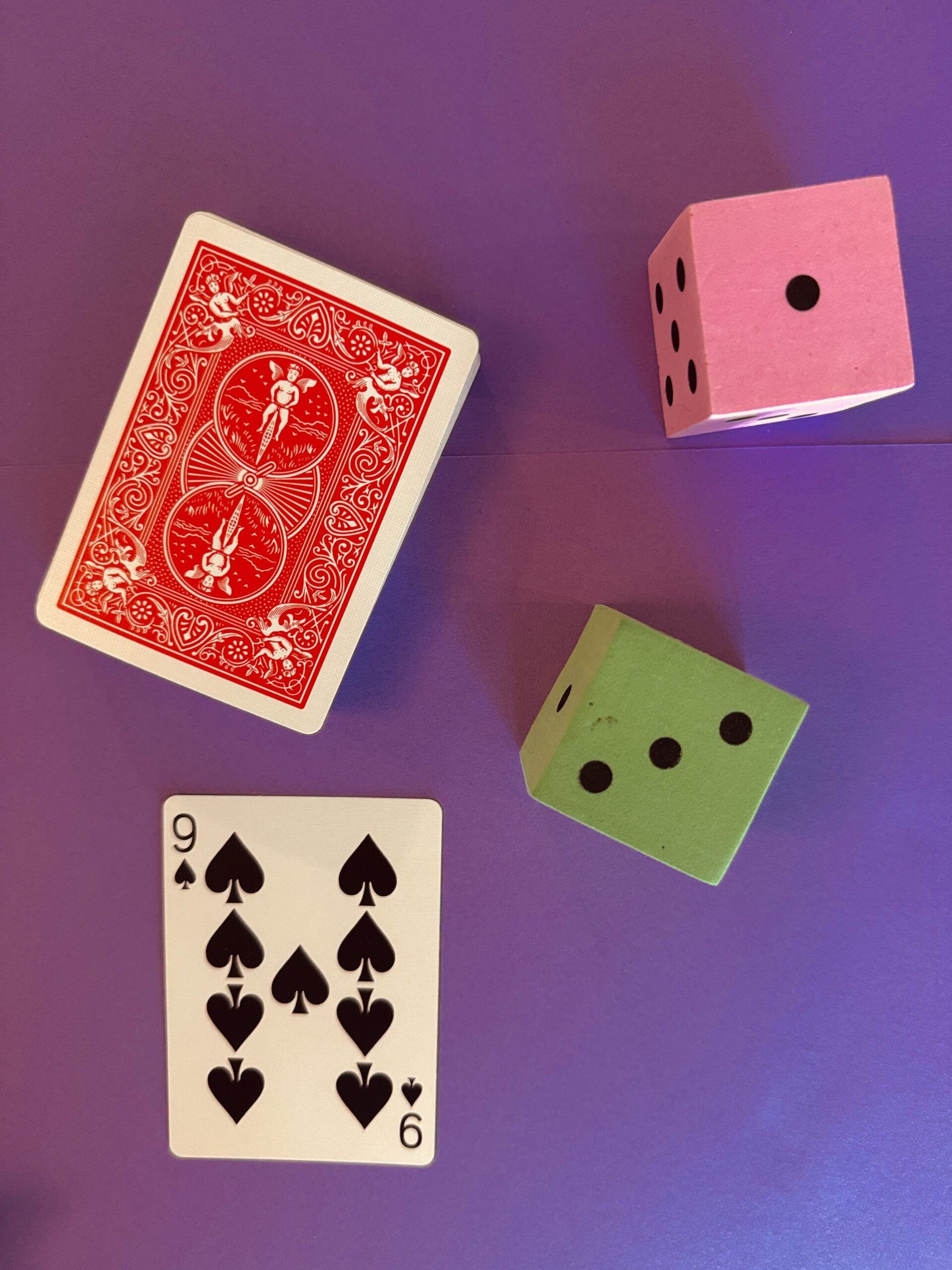
Players place the deck face down between them. The lead player flips a card up. Then they roll a pair of dice and count from the flipped card with the number generated by the dice. For example, if the player flips a 9 card and then rolls a 3, the player would start with 9 and count up 3, saying, “10 – 11 – 12.” If they are correct, they keep the flipped card. The next player goes and the play continues until the deck is finished. The player with the most cards wins.
17. Flipping Over Primes
Prime numbers are unique. Lay cards face down on a desk. Players take turns picking two cards. They can use any operation—addition, subtraction, multiplication, or division—on the two cards in whatever order they want to try to create a prime number. If they create a prime, they keep the cards. If they can’t, the cards get placed back face down again. After 20 minutes, count the cards. Whoever has the most wins!
18. Flip 3
Partner up. Lay 25 cards face down on the desk. Players take turns flipping over three cards. They can use any operation or arrangement to create a true number sentence. For example, if I pick a 3, queen, and a 7, I could set up the number sentence 10 (queen) – 7 = 3. If you can make a number sentence, you keep the cards. If you can’t, you turn them over and put them back in their original spots.
19. Beat the Dealer
Put three players together. The first player is the dealer. The dealer picks three cards from the deck and creates the largest number possible by arranging the digits. The other two players try to “beat the dealer” by also picking three cards and arranging them to try to create an even bigger number. Whoever beats the dealer gets a point. Keep track of points and play until the deck is used up. Most points wins. Then take turns being the dealer.
20. Beat That Fraction!
Deal out the deck to each player. Players keep cards hidden and fan them out so that only they can see them all. Players look through their cards and pick two that they believe will form the largest fraction they can make. When the dealer says “Go,” players put out their two cards one above the other to form a fraction and say, “Beat that fraction!” Players compare fractions and decide on which is the largest. The player with the largest fraction wins all the cards and puts them in their win pile. The person with the most in their win pile wins the game.
21. Mind Reader
Form a group of three students. The Mind Reader shuffles the deck of cards and puts it out in front of the two other players. Each one picks a card and does not look at it, but instead holds the card against their foreheads, facing out so the Mind Reader can see them. The Mind Reader then tells them the product of their two cards. If the cards are a 9 and a 3, for example, the product would be 27. Now the other two players go back and forth trying to guess the two cards. Whoever guesses right wins the round and the roles rotate.
22. This Is Sort of Fun
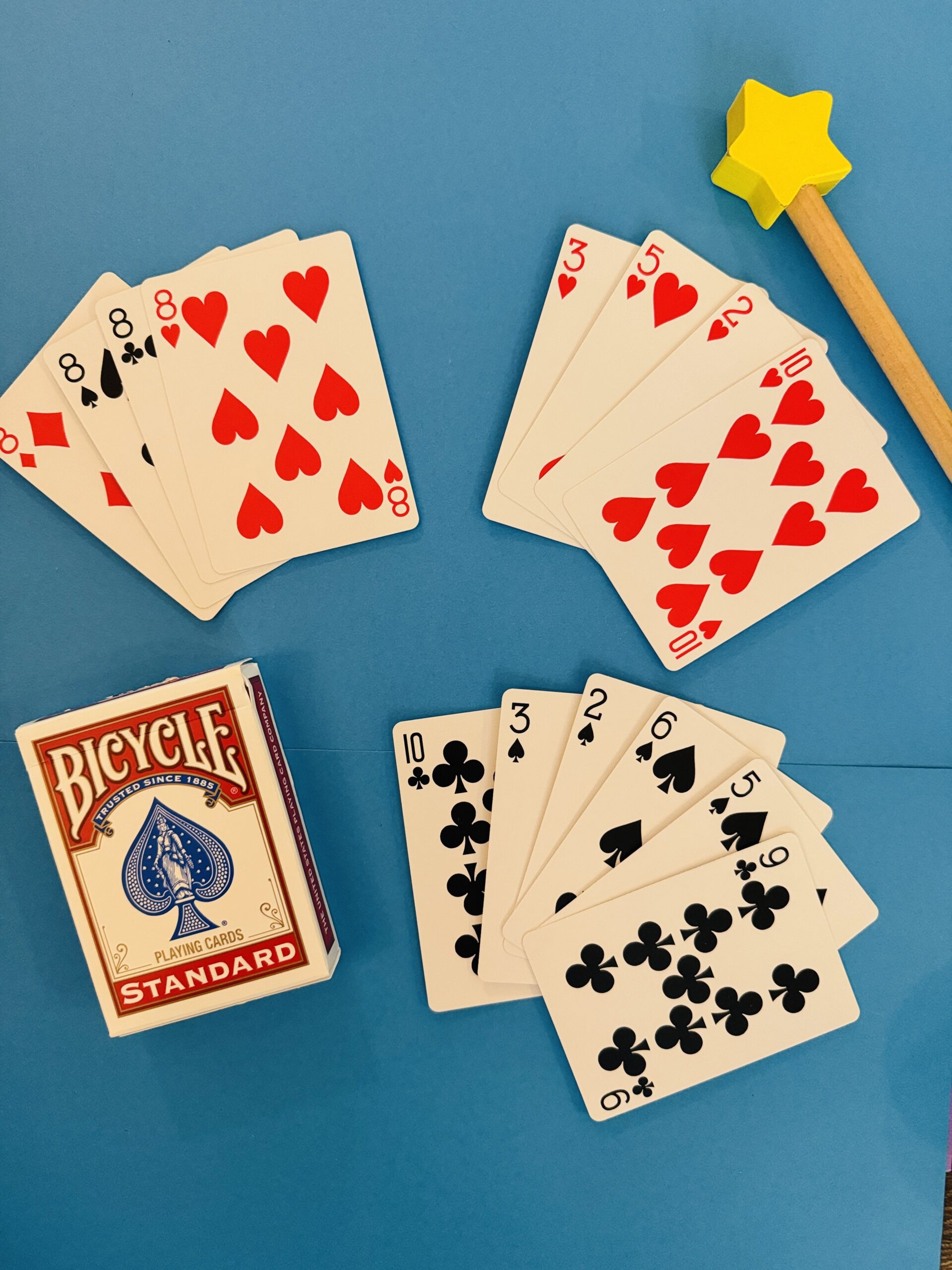
This is natural for younger learners, but older students can have fun with it too as they do more complex multi-rule sorts.
Have two players take a full deck of cards and spread them out face up. Then ask them to sort the cards into groups so that each group has a clear sorting attribute. With cards, the attributes are color, suit, number/value, picture or non-picture, and characteristics of the numbers such as odd/even.
Players can have as many groups as they want. When they are finished, have players invite other students and the teacher to take a look and see if they can figure out the sorting rules for each group of cards.
23. Secret Card
This is one of the best partner math card games for working on number comparisons and mathematical thinking. Each player gets a set of cards with one each of 1 (ace) through 10. The lead player chooses a card from their deck and lays it face down. This is the Secret Card. The second player tries to guess what the card is by laying down what they believe is the same card. The lead player gives feedback, saying one of three things: correct, too high, or too low. Based on this, the second player puts out another card. More feedback follows until the second player lays down the matching-value card. Record how many cards were played. Players switch roles. Whoever plays the least number of cards in a round wins that round.
24. Safe!
There are more even-numbered than odd-numbered cards in a deck of cards when you consider the face cards being worth 10. That’s the basis of this game.
Players take turns picking cards from the top of the deck. They keep going as long as they pick even numbers (this includes all face cards). As soon as they pick an odd number, they lose all the cards they have picked and must put them in the discard pile. They can decide to stop picking at any time and say “Safe.” The number of cards they have safely picked becomes their score for that round and they keep those cards. The partner player may keep going or choose not to. They must also call “Safe” when they want to stop and count their scores. The player with the most cards when the deck is finished wins.
25. Subtraction Action
This is a good partner game for practicing simple subtraction. Players each flip over two cards from the middle of the deck. They place the two cards next to each other and subtract the smaller one from the larger one. Whoever has the lowest answer is the winner of the round. For older students, you can even play this where they can subtract the higher card from the lower card and work with negative numbers.
26. Multiplier
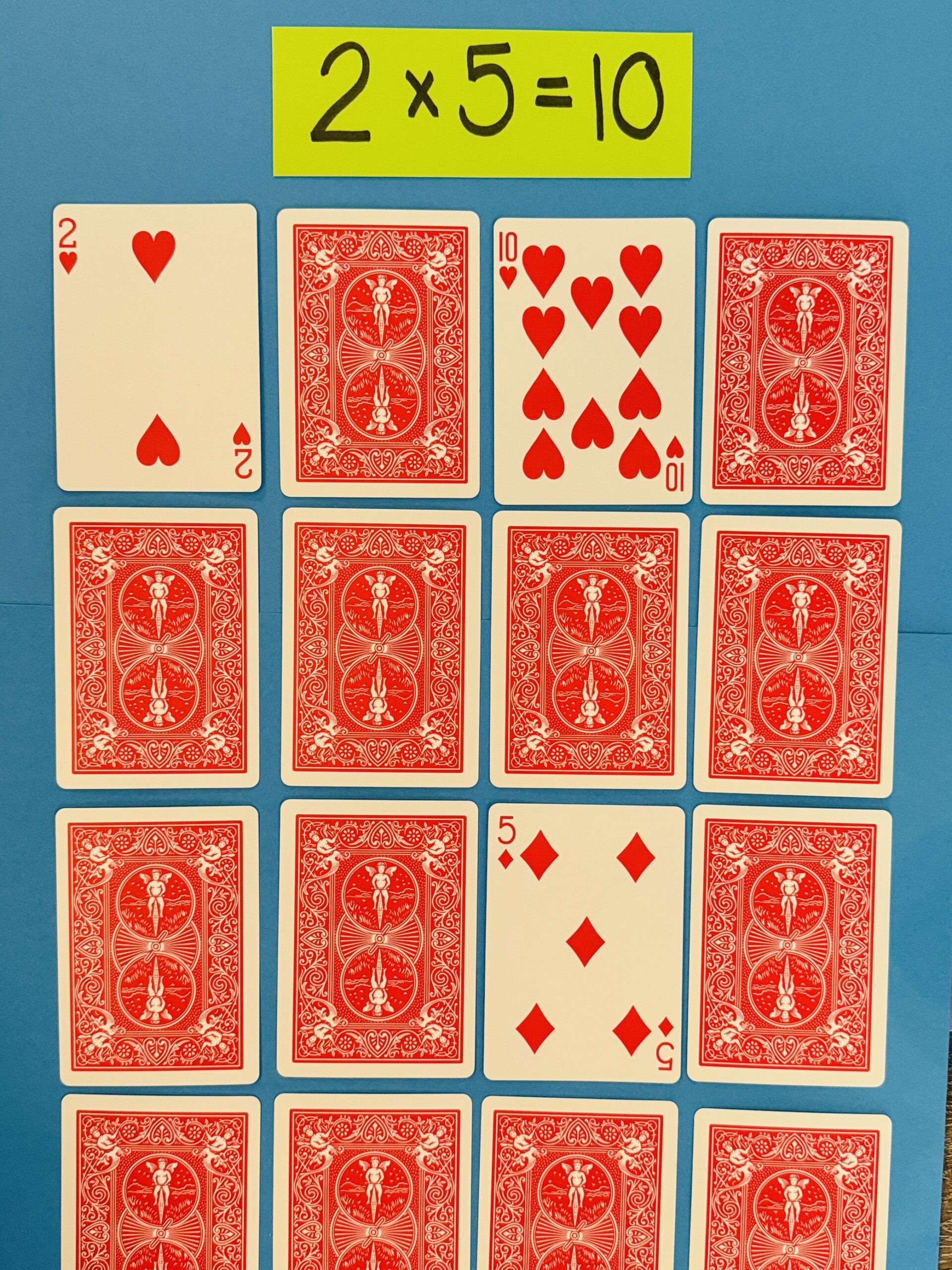
Shuffle the deck and deal out two piles. Players each flip over two cards. They multiply these together and get a product. Players compare products and whoever has the highest product wins that round. Cards go into the discard pile, and players play until the two stacks are gone. If a player incorrectly multiplies their cards and the partner does it correctly, the point goes to the partner.
27. Don’t Be Too Negative
In this game, all red cards are negative numbers and all black cards are positive numbers. Players draw two cards from the top and use any operation to try to create the smallest possible answer. To make the game even more challenging, have players draw three or four cards in a hand and use various operations, again to create the smallest possible answer.
28. Challenging Card Combo
The lead player chooses a double-digit target number. Players choose four cards from the deck. They then try to use their four numbers and any operations to get as close to the target number as possible. If you get the target number exactly, your score is 0. If you are 1 away, your score is 1; 2 away, your score is 2; and so on. The player with the lowest score is the winner.
If your students like math card games, try these dice games that teachers and students will love!
Plus, be sure to sign up for our free newsletters to find out when more articles like this are posted!
